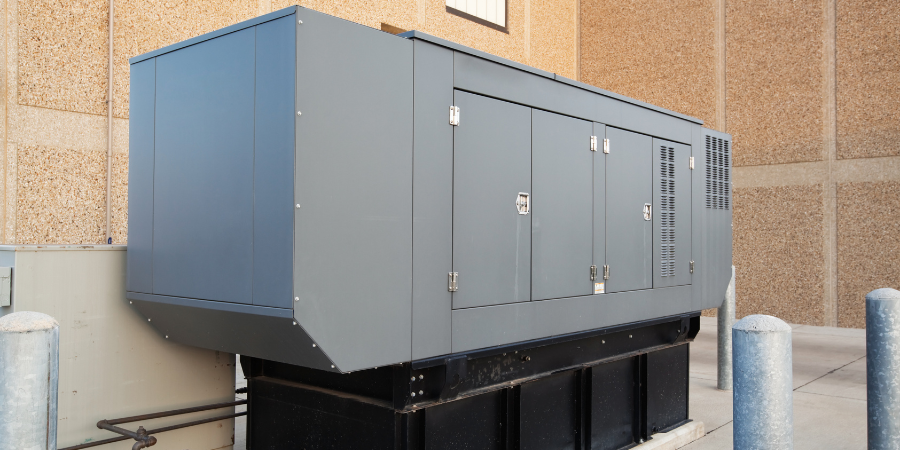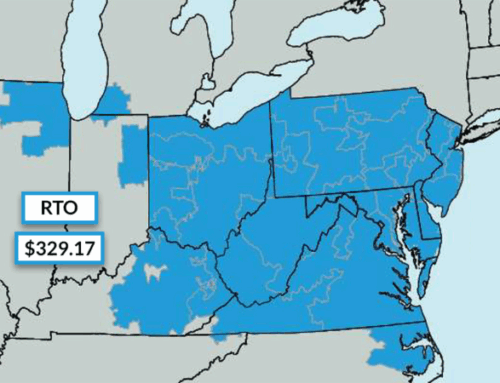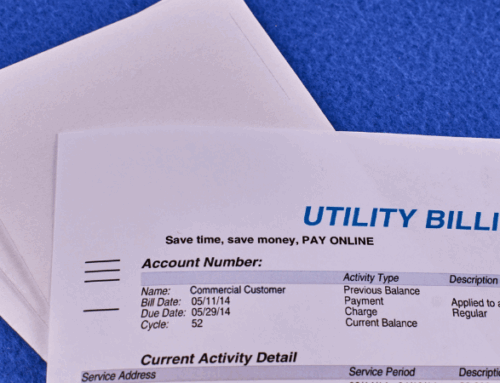Rising capacity charges, unpredictable market prices, and mounting sustainability targets are prompting a growing number of businesses to generate their own electricity on-site. Known as distributed generation or on-site power generation, this approach allows organizations to offset grid costs, manage peak demand, and gain greater energy independence. From solar panels and combined heat and power (CHP) systems to advanced battery energy storage systems, on-site solutions are now both technically viable and financially attractive. This article explores the forces driving adoption, the technologies leading the movement, and how companies are using on-site generation to protect their bottom line.
What Is On-Site Power Generation?
On-site power generation, also known as distributed generation, is the production of electricity at or near the point where it’s consumed. Instead of relying entirely on electricity transmitted from a central power grid, businesses use their own equipment to generate some or all of their energy needs locally.
Centralized power generation requires long-distance transmission, which not only adds costs through line losses and congestion but also exposes businesses to the vulnerabilities of the entire system. On-site generation reduces these risks by producing energy directly at the facility, lowering transmission losses and offering the flexibility to operate in tandem with or independently from the grid.
What’s Driving The Shift To On-Site Energy?
There are several factors contributing to the widespread adoption of distributed generation, including:
Rising Capacity Costs
Capacity costs, which are regulatory fees tied to maintaining enough generation to meet peak demand at all times, have risen sharply in recent years. On the PJM grid, prices soared over 500% from the 2024/25 delivery year to the 2025/26 delivery year. Recent auction results for 2026/27 included an additional spike of 20%. For large users, these charges can account for a substantial portion of total energy spend, making on-site generation an attractive way to reduce them or pay for the on-site infrastructure investment.
Energy Price Volatility
Energy markets are unpredictable and can move drastically with unpredictable variables such as weather. Fuel price spikes, supply constraints, and grid disruptions make it difficult for businesses to forecast costs. Generating power on-site can help end users lock in more predictable long-term operating expenses.
Grid Instability
Extreme weather events, equipment failures, and cyberattacks have all led to high-profile blackouts in recent years. On-site generation gives businesses a safeguard against outages that can halt operations and cost millions. If the business is able to scope a distributed generation asset to cover most or all of its electric load, it can remain independent from central grid outages.
Falling Prices
The cost of solar panels, wind turbines, and battery storage has dropped dramatically over the last decade, making it possible for companies to achieve payback periods that were once unrealistic. When combined, these assets can help end users build sustainable microgrid systems to power their businesses or organizations.
Technologies Powering The Distributed Generation Movement
The top energy technologies leading the way when it comes to on-site generation include:
Solar PV
Rooftop solar remains one of the most accessible and cost-effective ways to generate on-site power, particularly for facilities with high daytime energy usage. These systems can typically offset a large portion of energy consumption in a building and are relatively simple to install.
Combined Heat and Power (CHP)
CHP systems produce both electricity and usable heat from the same fuel source, dramatically improving efficiency. A CHP system might be a natural gas turbine generator that produces electricity onsite. The heat from the turbine is then captured to replace steam or heating loads, helping to improve the system’s payback period. They are ideal for manufacturers, hospitals, and other facilities with substantial thermal needs.
Energy Storage Integration
Battery energy storage systems (BESS) allow facilities to store excess electricity and use it during peak demand, helping to avoid expensive capacity charges and providing backup during outages. BESS are typically integrated with other on-site generation sources, such as solar to capture the excess electricity from the solar arrays that is not being directly consumed. Batteries can also be deployed in the wholesale ancillary services markets as a revenue-generating asset for the owner.
Business Benefits Of Generating Power On-Site
By generating their own electricity, businesses can significantly reduce reliance on the grid power and cut demand charges, particularly during peak usage periods when rates are highest. On-site systems also provide a reliable source of backup power, ensuring operations continue uninterrupted during grid failures, a significant advantage for mission-essential facilities.
Top U.S. Industries Installing On-Site Energy Generation:
The top industries in the U.S. today that are installing on-site generation include:
Data Centers
Data centers have some of the world’s most demanding uptime requirements. Many are now pairing solar arrays and battery systems, and even on-site natural gas generation, to maintain operations during outages.
Industrial
Factories and industrial facilities are using CHP and solar-plus-storage solutions to reduce energy bills while capturing efficiency gains from heat recovery. Industrial environments with heating process demand such as plastics manufacturers, concrete plants, commercial laundry facilities, and more, are utilizing these CHP strategies to save money and become more grid-independent.
Critical Facilities
Hospitals, water treatment plants, and airports that must have power 24/7 to operate critical tasks utilize on-site power generation for different reasons. These facilities typically value distributed generation resources as emergency back-up capability rather than cost savings.
Key Considerations Before Investing In On-Site Energy
Before investing in on-site energy, businesses must evaluate several critical factors. Site feasibility and infrastructure constraints, such as energy demand needs, roof integrity, and available land, can determine which technologies are practical and how systems are designed. Regulatory and interconnection requirements also play a significant role, as utility rules, permitting processes, and available incentives can influence both project costs and timelines. Finally, selecting the right financing model is essential. Some of these systems come with significant tax benefits and carry different implications for capital expenditure and ROI.
Interested In Generating Your Own Power?
On-site power generation is becoming a core strategy for large energy users to manage rising capacity costs, protect against outages, and advance sustainability initiatives. Whether through solar, CHP, batteries, or a hybrid approach, businesses have more tools than ever to take control of their energy future. By partnering with an experienced advisor like Diversegy, companies can navigate technical, financial, and regulatory complexities to build a tailored distributed energy plan that delivers measurable results. Contact our team of energy market experts today to learn more about your on-site power options.



